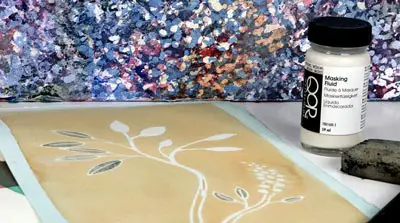
Do you want to paint your drawing, but there are certain areas you don’t want to paint over? We got you. Masking fluid is a powerful method to add protection to your drawing.
This is why you must learn how to use masking fluid for watercolor. Luckily for us, using masking fluid is quite easy.
Throughout this guide, we will be going through a couple of simple methods to apply masking fluid.
You will go from a newbie to a professional in no time, so make sure to read through the entire article!
Steps to Apply Masking Fluid
If you want to improve as an artist and have many tricks under the bell, this is one of those things you must learn early on.
Sometimes you might not want to apply paint over a particular area, but if you don’t use masking fluid, you might find yourself in a rather tricky situation. So, to make your life easier, here are the steps to apply masking fluid:
1. Choose the Drawing
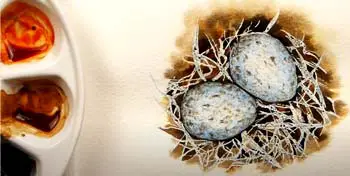
First, you need to choose a drawing you want to paint over. From there, you just have to visualize how you want it to turn out.
Choose the areas you want to paint and those areas that you do not watch to paint over.
This step is quite crucial as you won’t be able to add masking fluid later on. So, take your time and choose carefully!
2. Choose the Brush
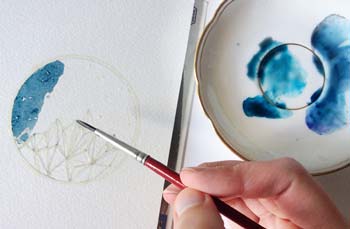
Using masking fluid on a brush is probably the easiest way to ruin a working brush. Masking fluid gets gunky quickly. This is why most artists have mixed feelings with masking fluid.
However, there is a way to stop this, using a silicone brush. The whole idea behind this is that masking fluid does not stick to the silicone. It’s also a lot easier to apply masking fluid with it.
Once the masking fluid is all dry, you just need to peel it off from your brush. Alternatively, you could use an old brush you don’t mind losing.
Read More: Can You 3D Print Silicone? Probably not at home. Learn all about silicone 3D prints!
3. Don’t Shake the Bottle
Before moving onto the next step, you should know that you should never shake the bottle of masking fluid.
If you do so, you’re going to get bubbles all over the bottle, and it’s quite hard to deal with that. So, make sure your masking fluid is never gummy!
However, if your masking fluid has color, you could stick something in there to stir it up. But for the most part, never shake the bottle.
4. Wet the Brush
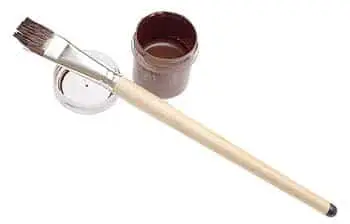
If you decided to use a silicone brush, feel free to skip this step. On the other hand, if you are using an old brush and still want to keep it, this is going to come in handy.
So, you simply need to wet the brush in water, and then cover it with soap. The idea behind this is that the soap and the water will protect the bristles from the masking fluid.
Therefore, when you finish applying the masking fluid, you should easily be able to peel it off from your brush.
5. Apply the Masking Fluid
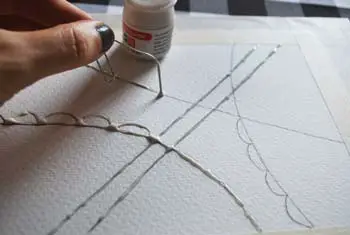
Here is how to use masking fluid: dip the tip of your brush inside the masking fluid. And then carefully pull it out. From there, you just need to apply the masking liquid in the area you want.
To keep the tip clean, make sure to clean the tip every 5 minutes to stop the fluid from getting into the brush.
Be careful when applying as you don’t want to go over the areas that you will paint.
6. Wait for It to Dry
Let it sit for at least five minutes before you do anything with it. Do not try to paint over it when it is still wet. If you do so, it will bind to the paper, and you will have a hard time trying to remove it.
The best way to tell when it is no longer dry; is when you notice that the masking fluid is no longer sticky and looks smooth. So, let it dry before moving on.
7. Paint as Needed
Now that you have successfully applied the masking fluid, you can paint freely without having to worry about those parts you do not want to paint.
Even if you do paint over the areas that you applied masking fluid, it doesn’t matter at all. The masking fluid acts as a barrier that stops the paint from getting in.
So, paint as much as you want without having to worry about those areas!
8. Remove the Masking Fluid
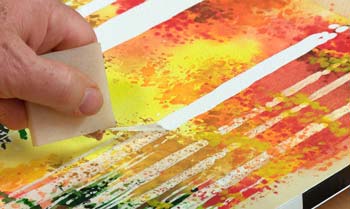
After it has dried, peel off the masking fluid using your fingers. Start by removing the top, and as you remove it, it should begin to peel off slowly.
Alternatively, you could choose the area that is thicker since that area is generally the easiest one to remove.
Don’t go too hard on it. Instead, take as much time as needed and remove it slowly from the surface.
Masking Fluid Using Tips
If you want to get the most out of masking fluid, there are some things you need to know beforehand.
Knowing these tips will allow you to use masking fluid more efficiently:
1. Use It Before the Paint
Before you begin painting, you want to apply the masking fluid. Otherwise, it won’t do anything for you.
So, if you ever want to use masking fluid, don’t forget to plan out everything beforehand.
2. Don’t Let it Dry for Long
Just like before, you want to plan out everything before you get started. If you leave the masking fluid on the surface for long periods of time, you will have a harder time trying to remove it.
While this is not impossible, it is certainly not the most pleasant thing to do.
3. Let It Dry Alone
You don’t have to use a hairdryer to speed up the process. If you do so, you may have a hard time trying to remove the masking fluid.
So instead, let it dry naturally without trying to speed up the process.
4. Remove It
Many people seem to make this mistake only to realize that they had to remove the masking fluid once it is dry.
So, if you notice the masking fluid is dry, remove it slowly so that it won’t leave any marks behind.
Frequently Asked Questions
Here, you can find the most common questions about Masking fluid. Since these are questions that most people have, you might find a problem that you have down below.
What can be used instead of masking fluid?
If you don’t want to use masking fluid, you could use rubber cement instead. The process is pretty much the same as masking fluid. You have to apply it where you don’t want to paint over, and you need to let it dry before you paint over it.
How do you remove stubborn masking fluid?
We strongly recommend washing the bristles using soap and water right after you finish using it. Otherwise, you could use your fingers to peel off the masking fluid.
Can you put masking fluid over painted areas?
Yes, you can put masking fluid over painted areas. However, it kind of defeats the whole purpose of using masking fluid. You should use it when you don’t want to paint over some areas.
What is a masking fluid pen?
A masking fluid pen is a reliable and straightforward way to apply masking fluid. It can be easily removed without any residues. You just have to use it on the surface that you don’t want to paint over.
How do you dilute masking fluid?
Masking fluid is quite thick and sticky. So, it is quite hard to dilute masking fluid. However, you can try adding water to it and try to improve its thicknesses.
Final Words
As you can tell by now how to use masking fluid for watercolor is quite simple. It does not take much time to apply and can be easily mastered after using it a few times.
Perhaps the major drawback of using masking fluid is that it generally ruins your brush. But you can get around that by using a silicone brush or and old brush you don’t use anymore.
You can also use soap and water on your brush if you don’t want to damage it.
Now you don’t have to spend several hours trying not to paint over areas that you don’t want to.
Related Recourse: